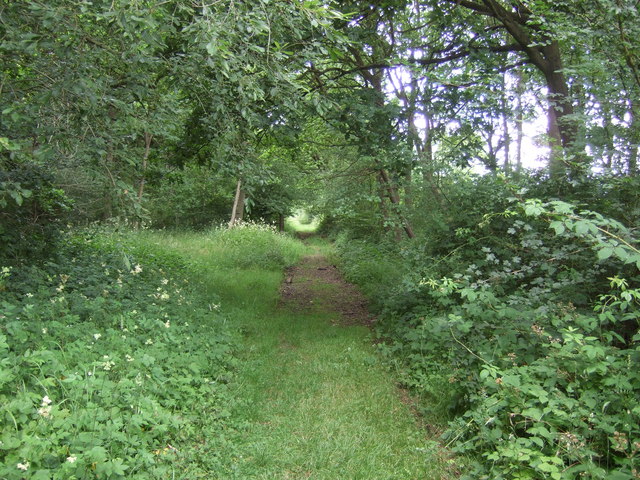[The continuation of "King Street" the Roman road that runs down the side of Emmonsails Heathe and Castor Hanglands]
What changes have taken place in the countryside in the area that Clare knew well — between Helpston and Castor — from the early 19th century until today? The changes in land use and distribution of habitats are in many ways the background to changes that have occurred in the flora and fauna since Clare's time. A comparison of maps of that period and modern maps reveals that apart from very minor changes in boundaries, the woodland cover of today is the same as in 1809. It is still possible to walk under the same oak trees near Castor that Clare would have seen as young trees within the coppice system.
What changes have taken place in the countryside in the area that Clare knew well — between Helpston and Castor — from the early 19th century until today? The changes in land use and distribution of habitats are in many ways the background to changes that have occurred in the flora and fauna since Clare's time. A comparison of maps of that period and modern maps reveals that apart from very minor changes in boundaries, the woodland cover of today is the same as in 1809. It is still possible to walk under the same oak trees near Castor that Clare would have seen as young trees within the coppice system.
However, many marginal habitats such as ponds, marsh and grassland have either gone or survive as mere fragments, and as such, are perhaps in the long term no longer viable for the flora and fauna they support. During the last decade conservationists have become increasingly concerned at the results of canalising water courses, but Clare experienced the same feelings of alarm at such treatments, which although less far-reaching, were being introduced in his time.
The woodland cover has remained because of something that Clare deplored: a combination of large estates and associated game shooting and fox hunting. There is no doubt that large areas of countryside within the triangle of Peterborough, Wansford and Stamford, and its complex of ancient woodland is a result of this type of land use. Without shooting and hunting, many of these woods would have been felled and ploughed or replanted with conifers. Today there are still restrictive notices on many woods in the area, the type of notice that Clare saw in his day. I recall with amusement some lines from his Journal:
16th April 1825
“Took a walk in the fields a birds nesting & botanizing & had like to have been taken up as a poacher in Hilly wood by a meddlesome conseited keeper belonging to Sir John Trollop he swore that he had seen me in act more than once of shooting game when I never shot even so much as a sparrow in my life - what terrifying rascals these woodkeepers & gamekeepers are they make a prison of the forrests & are its gaolers”
We may wonder how Clare accumulated his knowledge of natural history. After all, as a villager in Helpston, particularly in his youth, he would not have had access to many books on such a specialised subject, let alone a library, and most of the books he owned were acquired after he had obtained his initial knowledge. I think the answer is that he learnt a lot from his own eager observations and from the villagers themselves. People living in the country know a great deal more about wildlife than they are often given credit. In addition, he was friendly with two servants at Milton Hall: E T Artis, an archaeologist, and T Henderson, who was a keen naturalist, and Clare visited them frequently until Artis left in 1826.
I feel the best way to appreciate John Clare is to visit his countryside now, and in particular the two places that are as close as we can get to the countryside he knew. One is Castor Hanglands, the heath part of which is referred to as Emmonsails Heath. The other is Barnack Hills and Holes, a quarry where limestone has been extracted as far back as Roman times, and which probably still has as many plant species as when Clare knew it. Both sites are now National Nature Reserves. You can still hear the nightingale and grasshopper warbler, still see bee orchids and honeysuckle, and if you sit and rest awhile in Hanglands Wood amidst the thick bluebells, under oak and hazel, you can imagine Clare enjoying the same peace and tranquillity.
Untroubling and untroubled where I lie,
The grass below - above the vaulted sky.
Ray Collier
JCS Newsletter No. 47 (March 1995)
